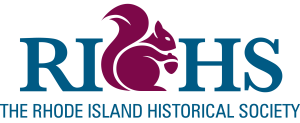Scope & content
The records grouped under Sayles Finishing Plants consist basically of two bodies of material: 1) all of the records of the Sayles Bleacheries for the years after 1906 when they were known, for the most part, as Plant A; 2) all of the records which contain multiple listings, combining Plant A material with that of the other sub-divisions of Sayles Finishing Plants (in which cases care has been taken to list exactly which units appear in each record group.) Records which fall outside of these two categories (i.e. the separate records of the Sayles divisions besides Plant A) have been grouped elsewhere, under their respective headings of Glenlyon Dye Works, National Tracing Cloth Company, Special Fabrics Company, and Sayles-Biltmore Bleacheries.
The records of Sayles Finishing Plants have been grouped into three Series, as follows: Series A, the administrative records, contains the journals, ledgers, cash records, accounts, valuations of plants and machinery, engineering records, and records of the Superintendent's office, main office, Central Purchasing Department, and Merchandising Committee; Series B contains what few employment records there are; and Series C contains the firm's production records, consisting mainly of the records of the Efficiency Department.
The Sayles Finishing Plants collection is spotty, with great strengths in some areas counterbalanced by glaring weaknesses in others. There is a fairly strong run of such formal records as Journals, Ledgers, and Cash Books for the early decades of 20th century; but from the 1930s onward, these become more infrequent and uninformative. The most impressive parts of this collection are those dealing with the technical aspects of the textile finishing business. Particularly valuable are the large number of bound and unbound instructions from the Superintendent's Office, which range from the 1900s to the 1950s and which cover almost every aspect of the company's operations. Of similar interest are the voluminous records of the Efficiency Department, whose time studies give a complete breakdown of every job in the plant. The collection also contains such nuggets as detailed records of the Central Purchasing Department during World War II. Where the collection is weakest is in areas such as executive decision-making and employment records.


